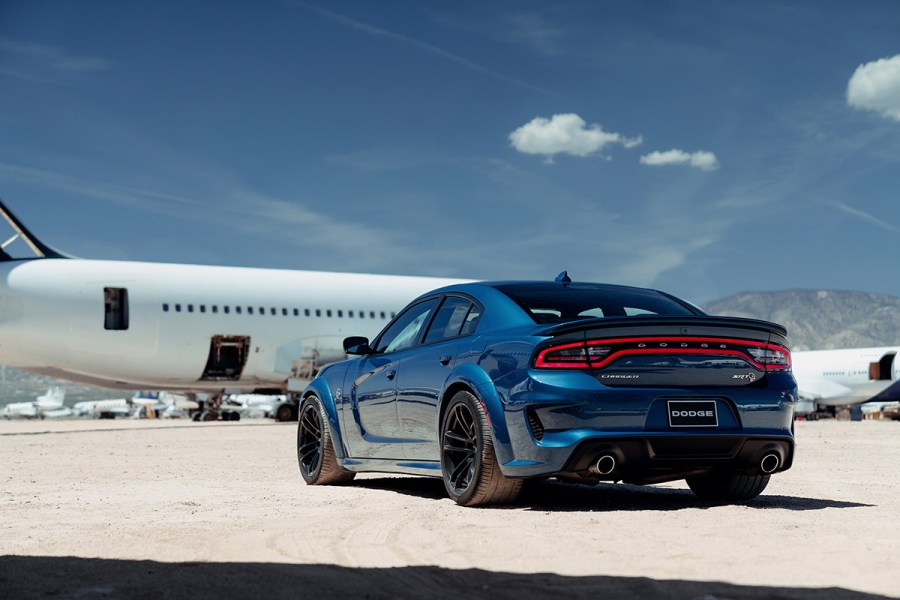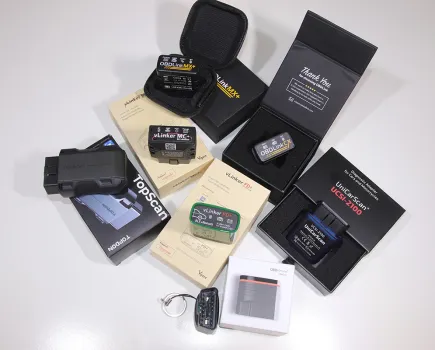A big V8 motor up front, power sent to the rear wheels and whole host of noise make muscle cars some of the best used cars you can buy for pure thrills. Here are our pick of the best used muscle cars you should buy in 2024.
Who doesn’t love a muscle car? No one that you want to know, right? The sensation of driving a car that’s just ridiculously overpowered is a thrill that never gets old. But what defines a muscle car in our modern era? Historically, a muscle car was a base-trim full-size car with a big engine. A typical muscle car would have cheap steel wheels with dog dish hubcaps and a bench seat. But under the hood you found the most potent chunk of iron that the automaker could drop in the hole. They weren’t expensive and they weren’t fancy, they were just fast.
That’s not the case today. Performance goes hand-in-hand with at least some luxury, and a hefty price tag on a new car. So we’ll define a muscle car as an American V8 production model with a back seat. That means we’ll leave out two-seat sports cars like the Ford GT, Dodge Viper, and Chevy Corvette. We’ll also leave out European sport sedans and exotics, and all EVs. Right now, EVs beat most cars when it comes to 0-60 acceleration, but no one would call those muscle cars. What’s left is the true American muscle, made more affordable on the pre-owned market.
Best Used Muscle Cars To Buy In 2024
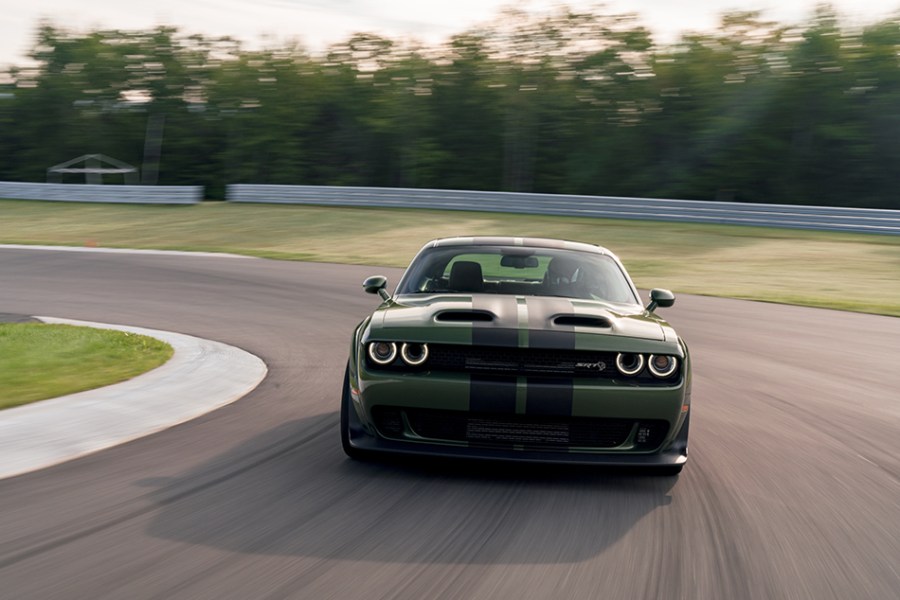
Dodge Challenger Hellcat (2015-2023)
The Dodge Challenger reigns in the muscle car world with its number and variety of supercharged Hellcat models, all north of 700 horsepower. The Hellcat was released in 2015 and it’s estimated that Dodge produced somewhere around 56,700 Hellcat-powered vehicles (including the Charger, we’ll get to that) over the last nine years. The basic Challenger Hellcat has 707 horsepower and 650 pound-feet of torque, passed to the rear wheels through your choice of a 6-speed manual or 8-speed automatic transmission. That will get you from 0-60 in 3.6 seconds, pretty much supercar time. You can expect to pay better than $50,000 for any well-kept example of the basic Challenger Hellcat, and more for any of the special editions.
Dodge wasn’t going to waste all its time on basic Hellcats. The special editions started as early as 2017 with the Challenger SRT Demon. That devil boasted 808 horsepower on pump gas, or 840 hp on race gas, along with a neck-snapping 770 lb-ft of torque. The Demon gives you a crazy 2.3-second 0-60 time and a ¼-mile under 10 seconds. Then we got the Hellcat Redeye in 2019 at 797 horsepower, plus a widebody option, and the SRT Super Stock at 807 hp for 2020.
As production of the Hellcat ends in 2023, Dodge is making the SRT Demon 170 with 1,025 horsepower, 945 lb-ft of torque, and a 0-60 time of 1.66 seconds. In case you were wondering, that makes the Demon 170 the quickest production car in the world. Just 3,000 examples will be made for the U.S., plus 300 for Canada.
How much?
$50,000-$150,000 / £40,000-£120,000.
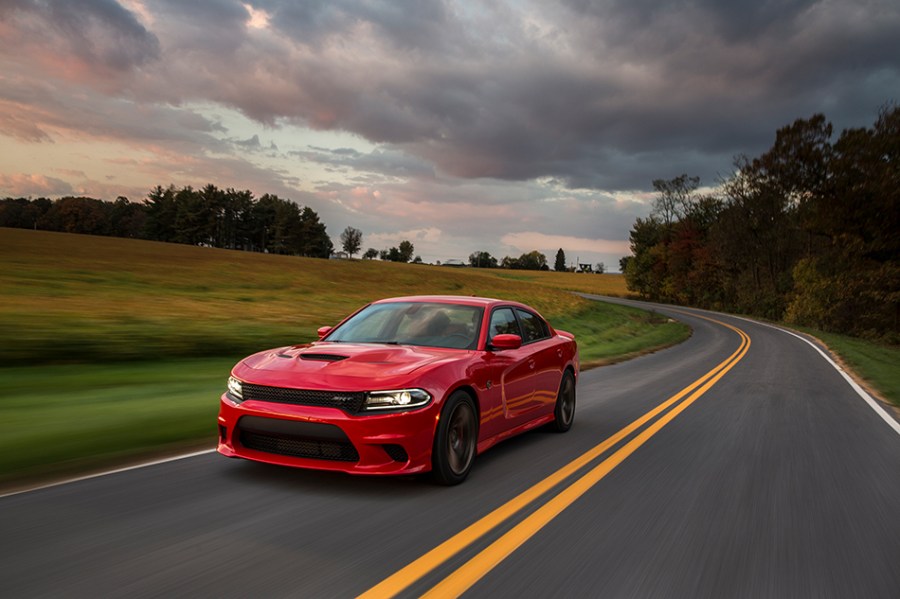
Dodge Charger Hellcat (2015-2023)
We can’t praise the Challenger without giving the big brother Dodge Charger its due. In 2015, Dodge released the Charger Hellcat as the quickest and fastest four-door sedan ever built. The Charger carries the same 6.2-liter supercharged V8 as the Challenger, with the 8-speed automatic transmission as the only driveline option. The Charger is almost as quick as the Challenger, making 60 MPH in 3.8 seconds and covering the ¼-mile in about 11 seconds. The 2020 widebody kit and the 2021 Hellcat Redeye special edition at 797 horsepower also came in the Charger body.
The thing about the Charger Hellcat is that it’s more of a traditional muscle car than the Challenger, being a little less expensive and having four doors. The Charger’s longer wheelbase also gives this Hellcat a little bit more stable handling than the Challenger. However, you can’t get a Charger with a manual transmission, if that’s important to you. But if the Charger is your ride, the price range is about the same as the Challenger. However, you’ll find more Charger Hellcats closer to $50,000 than you will Challengers. But as time goes on, the fact that Dodge made well over 50,000 of these cars will help bring prices down to Earth.
How much?
$50,000-$100,000 / £40,000-£80,000.
For more buying advice, check out our Dodge Hellcat buying guide.

Ford Mustang GT (2015-2023)
With the new seventh-generation Mustang announced for 2024, the sixth generation that launched in 2015 just became last year’s news. Powered by the 5.0-liter “Coyote” engine, the Mustang GT offered 435 horsepower and 400 lb-ft of torque from 2015-2017. Then you got 460 hp and 420 lb-ft from 2018-2021, before losing a bit to 450 hp and 410 lb-ft for 2022-2023. Of course, there were special editions. Ford made the 2019-2020 Mustang Bullitt, rated at 480 hp and 420 lb-ft. They also made the 2021 Mustang Mach 1 that had 480 hp and 420 lb-ft, before losing the same 10 hp as the base GT for 2022-2023.
If you want the real Ford muscle, you can spring for the Shelby GT350. This Mustang used the Coyote engine, but with a 5.2-liter bore and stroke and a flat-plane crank that yielded 526 horsepower and 429 lb-ft. Made from 2015-2020, Ford produced more than 23,000 examples of the GT350 and the track-ready GT350R.
Looking to buy one? Check out our Ford Mustang S550 buyer’s guide.
How much?
$40,000-$100,000 / £30,000-£80,000.
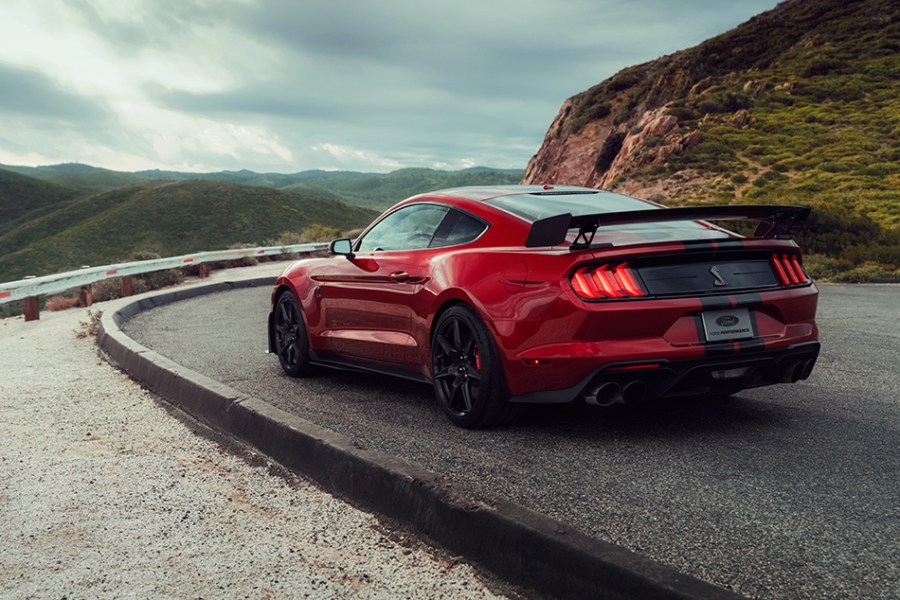
Shelby GT500 (2007-2022)
Ford wasn’t about to get left out of the supercharged high-power market pioneered by Dodge. The 2020-2022 GT500 filled that gap with a supercharged 5.2-liter Coyote rated at 760 horsepower and 625 lb-ft of torque. That car would do 0-60 in 3.3 seconds, and it’s little more of a street hot rod than the road racing idea behind the GT350.
If you want to save a little money on the used market, the 2007-2014 Shelby GT500 featured a blown variant of the previous generation 5.4-liter modular V8. GT500 power ranged from 500 to 662 horsepower and up to 631 lb-ft of torque. This generation of the GT500 was good for 0-60 times around 3.5 seconds and 11.6 seconds in the ¼-mile.
For the best of the supercharged Shelby Mustangs, consider the Super Snake, produced from 2007-2009 with 605 hp and a 3.5-second 0-60 time. The Snake came back from 2011-2014 with 660-662 hp and 590 lb-ft. Buyers could order special edition from Shelby with up to 850 horsepower. If you want the latest model, Shelby American produced a Super Snake from 2020-2022 with up to 825 horsepower and 0-60 in 3.5 seconds. They’ll also convert your existing Mustang GT to a Super Snake for about $72,000.
Want the ultimate? That’ll be the Shelby GT500 CODE RED Mustang, which features a whopping 1300hp.
How much?
$20,000-$125,000 / £15,000-£100,000.
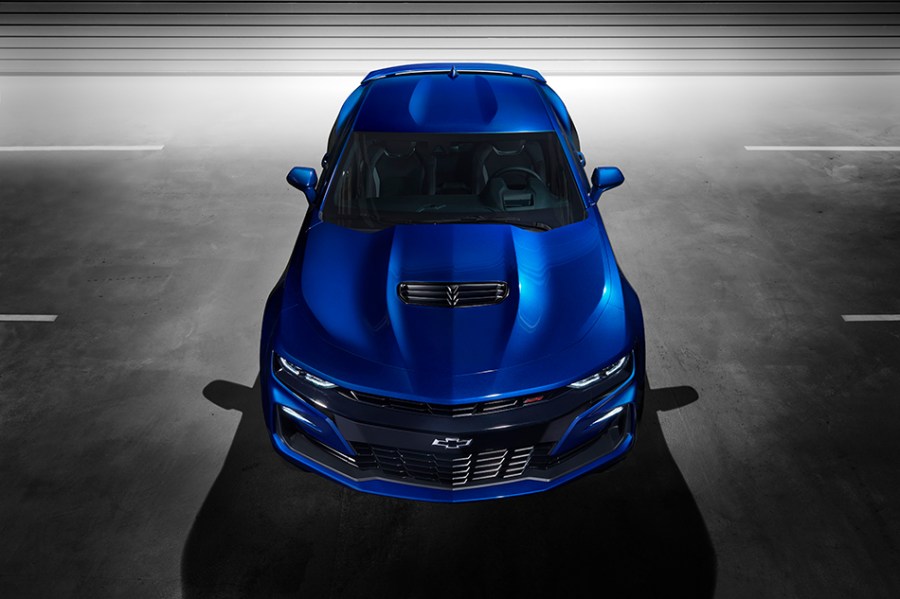
Chevrolet Camaro (2012-2023)
The latest generation of the Chevy Camaro launched to high praise in 2016. The basic SS V8 produced 455 horsepower and 455 lb-ft from the LT1 engine, but that was just the appetizer. Chevy dropped a supercharged LT4 into the Camaro chassis and called it the ZL1, a code that has great cachet in bowtie history. The ZL1 produced 650 horsepower and 650 lb-ft, with a 3.5-second 0-60 time and 11.4 seconds to over the ¼-mile. That car also came with magnetic ride suspension, and a long list of go-fast goodies.
Like other muscle cars, the SS was at first available with a 6-speed manual transmission, or an 8-speed automatic. The ZL1 offered the same manual as well as the newly-developed 10-speed automatic, which went on the SS starting in 2019.
If you want the ultimate Camaro, consider looking for the 2023 COPO (Central Office Production Order) Camaro. This one is not even street legal. They sold out all the available 632 cubic inch big block V8s for that model. That huge engine makes more than 1,000 naturally aspirated horsepower and 872 lb-ft of torque. What’s impressive is the 638 makes those numbers on 93 octane pump gas. It will rev to 7,000 rpm and its track chops include ¼-miles faster than 9 seconds.
If you want to save a little money, consider the older fifth-generation Camaro ZL1 and Z28 models made from 2012-2015. The 2012 ZL1 came with a 6.2-liter supercharged V8 rated at 580 hp, and it was available as a convertible starting in 2013. The legendary Z/28 designation came back in 2014 with a 7.0-liter LS7 V8 tuned for 505 hp and 481 lb-ft of torque. Both the ZL1 and Z/28 are excellent muscle cars that have depreciated into affordability in the last 10 years.
How much?
$25,000-$75,000 / £20,000-£60,000.
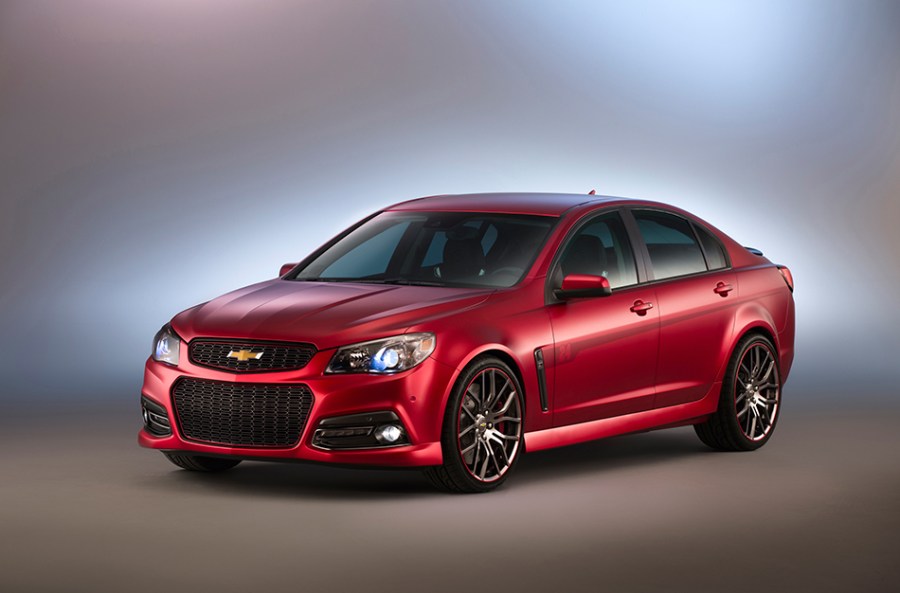
Chevrolet SS (2014-2017)
Among all the Hellcats and Shelbys, it’s easy to forget that there are muscle cars that fly under the radar, like the 2014-2017 Chevrolet SS. The SS is a four-door sedan based on the Holden Commodore from Australia. This Chevy stuck to the traditional muscle car formula; a lower-cost full-size sedan with an impressive engine. The SS was a rear-drive car powered by a 6.2-liter LS3 V8 borrowed from the Corvette. The LS3 was good for 415 horsepower and 415 lb-ft, paired with a 6-speed paddle-shifted automatic transmission. The SS would dash from 0-60 in 4.5 seconds and hit the strip at 12.9 seconds.
That might not sound super exciting after reading about all the supercharged pavement pounders in this list. Just remember that the SS also costs a whole lot less than those others, especially now. Those are respectable numbers that would have put the SS in the top tier of muscle cars back in the early 1970s. Chevrolet made and sold 12,860 examples of the SS, so they’re not very hard to find.
How much?
$20,000-$40,000 / £15,000-£30,000.
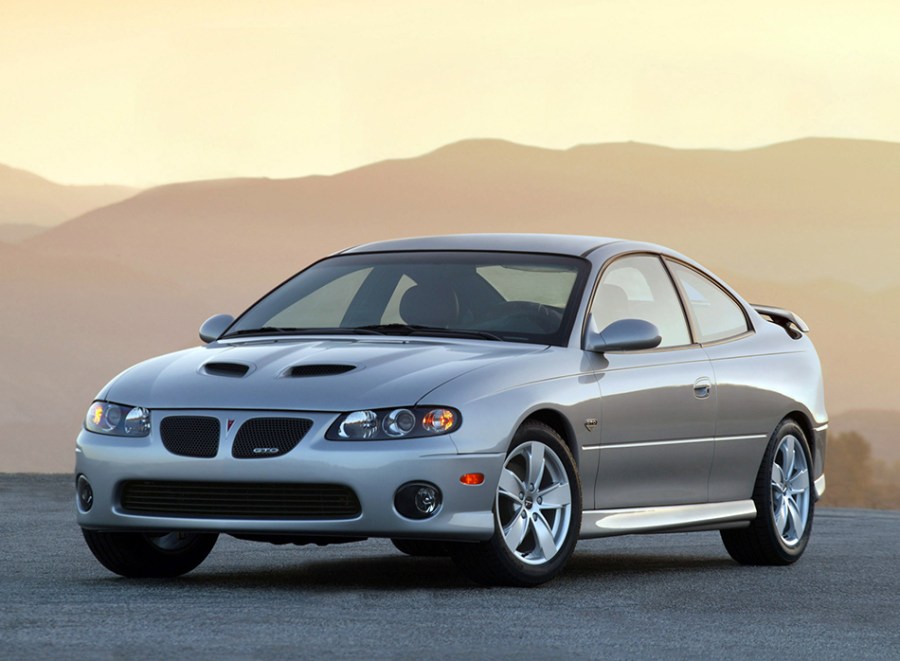
Pontiac GTO (2004-2006)
Along the same lines, from 2004 to 2006, Pontiac imported the Holden Monaro from Australia. That car got rebadged as the Pontiac GTO, picking up one of the greatest names from muscle car history. The thing was, this new GTO was worthy of its name. Equipped with 5.7-liter LS1 V8 for the 2004 model year, the GTO came with 350 horsepower and 365 lb-ft of torque. Power went to the rear wheels through a 6-speed manual or 4-speed automatic transmission.
The 2005 and 2006 GTO got the upgraded LS2 engine with 400 horsepower and 400 lb-ft. That gave the GTO a 4.8-second 0-60 time, and 13.1 seconds on the ¼-mile, with a top speed of 180 MPH. With combined production of over 40,000 cars, you can find and buy these for far less than better-known muscle cars.
How Much?
$15,000-$20,000 / £10,000-£15,000.

Pontiac G8 GXP (2009)
As a more recent alternative, the single-year 2009 Pontiac G8 GXP was a rebadged four-door Holden Commodore. The car came equipped with a 6.2-liter LS3 engine. Buyers got a choice of a 6-speed manual or automatic transmission. With 415 horsepower and 415 lb-ft, the G8 GXP hit 60 MPH in 4.5 seconds, hit the strip at 13 seconds ET, and could pull 0.90g on a skidpad. This final-year Pontiac is nearly a secret, even among muscle car fanatics. Its low production of 1,829 units means it may take some searching, and a bigger budget, to find a good one.
How Much?
$25,000-$30,000 / £15,000-£25,000.
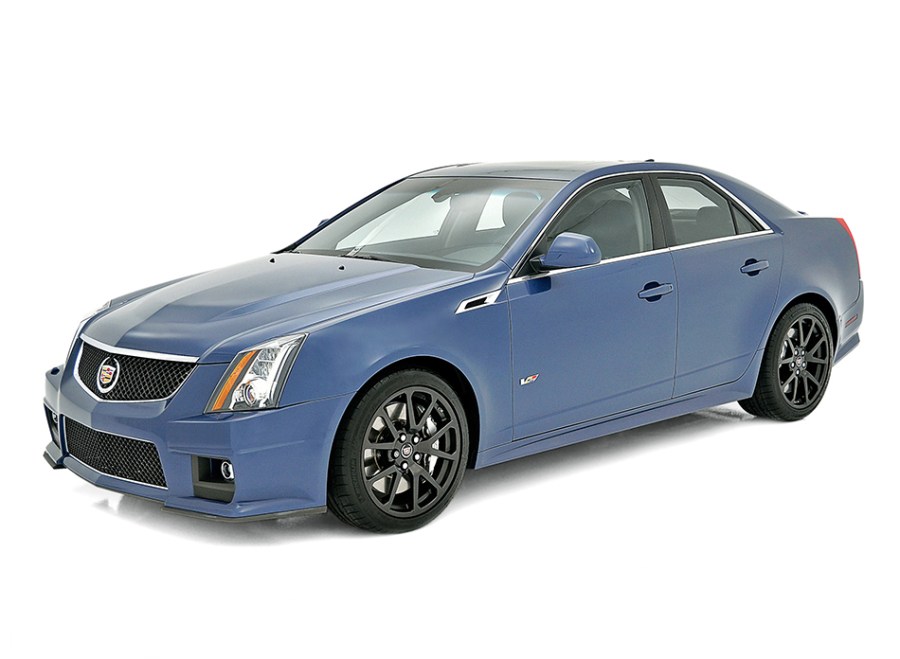
Cadillac V-Series (2004-2023)
One of the most surprising entries in the top 10 best used muscle cars is the Cadillac V-Series. We’ll put all the caddies in one basket here, and you can take your pick. The world rocked on its heels in 2004 when Cadillac brought out the CTS-V. This car had an LS6 5.7-liter V8 paired with a Tremec 6-speed manual gearbox. The original CTS-V produced 400 hp and 395 lb-ft of torque. The 2006-2007 version got the upgraded LS2 V8.
After a break in 2008, the CTS-V was back from 2009-2014 with a supercharged 6.2-liter LSA, pushing out 556 horsepower and 551 lb-ft of torque. Buyers could choose the Tremec manual or a 6-speed automatic. Notably in this generation, Cadillac also made the CTS-V as a two-door coupe or a four-door wagon, which is a real collector’s item. 0-60 happened in about 4 seconds with these cars.
There was another break year in 2015, but the third-generation CTS-V hit the market from 2016-2019. This Cadillac had the LT4 V8 supercharged to 640 hp and 630 lb-ft of torque. This generation came with an 8-speed automatic transmission and a 0-60 time of 3.5 seconds. Since 2019, Cadillac has come out with the CT4 and CT5 V-Series cars, including special Blackwing editions.
We can’t leave Cadillac without mentioning one other special car – the 2006-2009 STS-V. Built on a larger platform than the CTS-V, the STS-V came with a supercharged Northstar V8 rated at 469 horsepower and 439 lb-ft of torque. This big Caddie would do 0-60 in 4.6 seconds and an ET of 13.2 seconds. With special suspension and Brembo brakes, the STS-V is another under-the-radar muscle car that you can find at bargain prices now.
How much?
CTS-V: $15,000-$50,000 / £10,000-£40,000.
STS-V: $10,000-$20,000 / £7,500-£15,000.
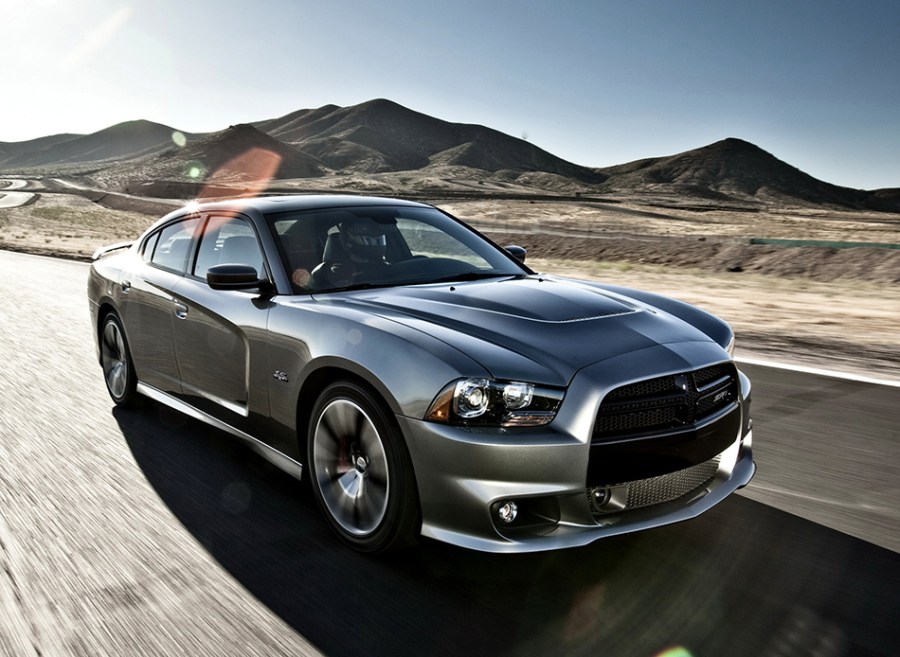
Dodge Charger and Challenger SRT8 (2005-2023)
We’ll bookend our list with Mopars, because Mopar has always been about muscle. The Dodge Charger and Challenger SRT, and later SRT 392 models have almost been pushed off the stage by the Hellcats. But these naturally aspirated Hemi V8 cars carried impressive muscle in their own right. For example, the 2005 Challenger and Charger SRT8 models used a 6.1-liter Hemi worth 425 horsepower, 420 lb-ft, and a 4.8-second 0-60 time. Then in 2015, the Challenger and Charger got the SRT 392 engine, a 6.4-liter Hemi with 485 horsepower and 475 lb-ft of torque. Also worthy of note, the 2014 Charger Pursuit V8 AWD got a 370 horsepower 5.7-liter engine, but with all-wheel drive. That car excelled at road racing, and laid down a couple lap records.
How much?
$20,000-$40,000 / £15,000-£30,000.
Check out our Dodge Charger SRT buying guide for more information.
How were these muscle cars chosen?
I’ve been been an automotive journalist since 2002, and driven every one of these cars in that time, plus more than a few of the original muscle cars from the 1960s and early 70s. The truth is, apart from baby boomers with a case of nostalgia, there’s no reason to prefer the old muscle cars. Most of these newer machines have the kind of power that Detroit could only dream about in 1969, plus reliability, comfort, and much better handling. Oh yeah, one more thing: they don’t rust out and they’ll go 200,000 miles.
The past 20 years represents the real muscle car era in automotive history, and the cars listed here are the best of that golden age, available now at depreciated used car prices instead of the astronomical money you’ll pay for an old car at auction. So what’s not to like?

